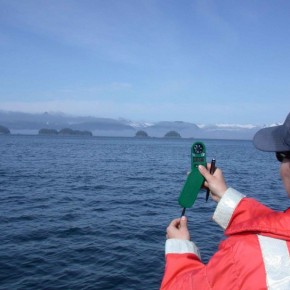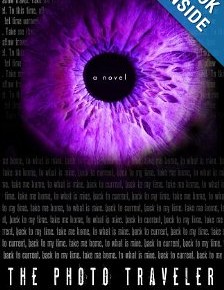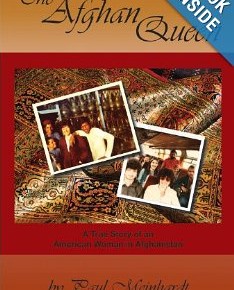Welcome, gentle reader, to July 2013’s issue of Synchronized Chaos Magazine. This time around, our contributors remind us that we can view the universe from various perspectives, including those at many levels beyond or below the human scale.
Staff member and recurring contributor Cristina Deptula illustrates both ends of the spectrum. She looks at the very small with her piece on San Francisco State University’s personalized medicine conference, where scientists attempt to create individual therapies for patients based on their genetics. And at the extremely large, through her piece on a talk on the Big Bang and stellar evolution by UC Berkeley’s Dr. Eliot Quataert at California’s Chabot Space and Science Center.
Regular neuroscience columnist Leena Prasad highlights a current United States national initiative for more detailed human neuroscience research, the BRAIN project, in her July installment of Whose Brain Is It? This project aims to develop even more sophisticated technologies than today’s fMRI scans, which show greater or lesser activity in different parts of living people’s brains, in order to gain a sense of what is happening in the active regions.
Several pieces this month present the experience of physical, human-scale dislocation.
Wendy Saddler discusses Alison Nancye’s novel Note to Self, where the main character finds the courage to live her dreams in part through a trip to Peru, relating the character’s internal journey to her own personal story of overcoming abuse. The novels Elizabeth Hughes reviews also involve protagonists lost in unfamiliar surroundings: Jeremy Bowden’s protagonists in Bioweapon face an alienating and oppressive government and culture, and Christopher Bernard’s lone wandering male figure in Spy in the Ruins picks his way through a city fragmented by an earthquake and the accumulation of forty years of rapid San Francisco Bay Area cultural change.
Gavin Hillstone, male lead character in Arthur Gonzalez’ sci fi novel The Photo Traveler, reviewed by Fran Laniado, often gets himself literally lost in space and time. His journey is prompted by a deeper sense of alienation from his abusive stepfather, giving him the impetus to explore his past and find out who he really is.
Each of these characters survives the dislocation, to an extent, by reclaiming and recreating their own identities. The individuality of Bowden’s human-robot hybrid characters give them an edge over the conformist mainstream society. The man in Spy in the Ruins recollects his significant relationships and the formative events in his life to stay sane as he picks through the wreckage. Gonzalez’ protagonist Gavin leaves the only life he knows in search of family, and eventually embarks on a hero’s quest to protect his newfound loved ones and defend their shared belief in limits to human power.
Alison Nancye’s main character Beth, like Lukas Clark-Memler and others who travel to reorient themselves and clear their heads, records the journey in a diary that reflects lessons learned about themselves as well as the daily events. Gavin, fittingly, takes photographs to remember his travels.
Bruce Roberts, when reviewing Paul Meinhardt’s The Afghan Queen, considers his own identity as he reads, and compares it to the main character’s very different life. Unlike the late Lela Meinhardt, an art dealer who often traveled alone to pre-Soviet Afghanistan to bring tribal art to Western markets, his existence has been rather calm, rooted as a classroom teacher in one small working-class California town. Yet, teaching junior high can be its own adventure, and reading The Afghan Queen helps him reflect on his own journey through comparison.
Colin James describes the slow death of a once-passionate romance in his “Love Exit,” as James ponders where he now belongs in his significant other’s universes. This piece, focused on intensely personal longings in the midst of an issue where other work explores the evolution of the universe and inter-cultural and international travel and business ventures, remind us that our ordinary lives are, in fact, a real component of the larger whole. Each individual’s joys and sorrows do matter, do play a part in the broader symphony of life’s existence.
Other poets this month expand our perspective by creating distinct, yet archetypical characters, and then linking these individuals to a broader spiritual and cultural context. Frances Varian reflects on the faith and loneliness of women in poet Christina Rossetti’s age, and finds beauty and spirit in struggling people who would otherwise go unnoticed. By ‘speaking even when no one is listening,’ her characters assert their identity and humanity, and approach a kind of beatification through perseverance and dignity in their circumstances.
In a somewhat similar way, Faracy Grouse explores her poetic protagonist’s relationship to our culture’s current paradigm of clinical diagnosis and treatment for mental illness. Here, perseverance and dignity grants her a long-awaited diagnosis, which finally brings some practical help and a way to make scientific sense of the mysteries in her brain. But it cannot bring the redemption she seeks from guilt over past actions, or fully restore her to communion/community with others.
Christopher Bernard grants beauty and grace to his poetic subjects, who set out in boats crafted from roses, on a violent sea that drowns children and adults beneath its windswept whitecaps. Yet, the strident call in the second half of the piece conveys that these are not pathetic characters, but people brave enough to venture forth and live and love, even though life and relationships will not prove permanent. Performance poet Claire Blotter draws upon historical and mythical perspectives through her fairytale language in pieces about eating disorders, mass murder, addiction, and mental illness. Perhaps, through reaching for other perspectives and paradigms alongside the modern, clinical ways of seeing things, her protagonists can find the healing and reconciliation for which Faracy Grouse’s protagonist longs.
Christopher Bernard also explores folklore’s reflection of personal and social psychology through his review of a recent San Francisco performance of Philip Glass’ opera La Belle et la Bete, patterned after the 1946 Jean Cocteau film. He touches on human issues alluded to through this traditional tale, such as how we define attractiveness, concepts of power and victimization, and social obligations versus personal choice.
Finally, with the remaining two submissions, we return to the dichotomy introduced at the beginning, illustrative of the vast spectrum of the universe, enabling views from a wide variety of perspectives. Returning poet Dave Douglas also examines psychology through his poem “Railway,” shrinking the human mind down to a much smaller scale, and metaphorically viewing the movement of individual thoughts and decisions as boxcars and passengers within a railway system. As with the neuroscience research Leena Prasad mentions, Douglas seeks to understand how the mind selects and processes thoughts, although he looks at it with the tools of poetry and psychology.
Douglas’ small-scale perspective, dramatized with turnstiles, fields of sunflowers, and a derailment, contrasts with researcher and information technology consultant Ramez Naam’s macroscopic view of the promise of innovation to overcome resource shortages throughout human history. Naam presents his thoughts in his book The Infinite Resource: The Power of Ideas on a Finite Planet, reviewed by freelance science journalist Charlotte Capaldo.
Please enjoy this issue, we hope that it inspires and enlivens you.






